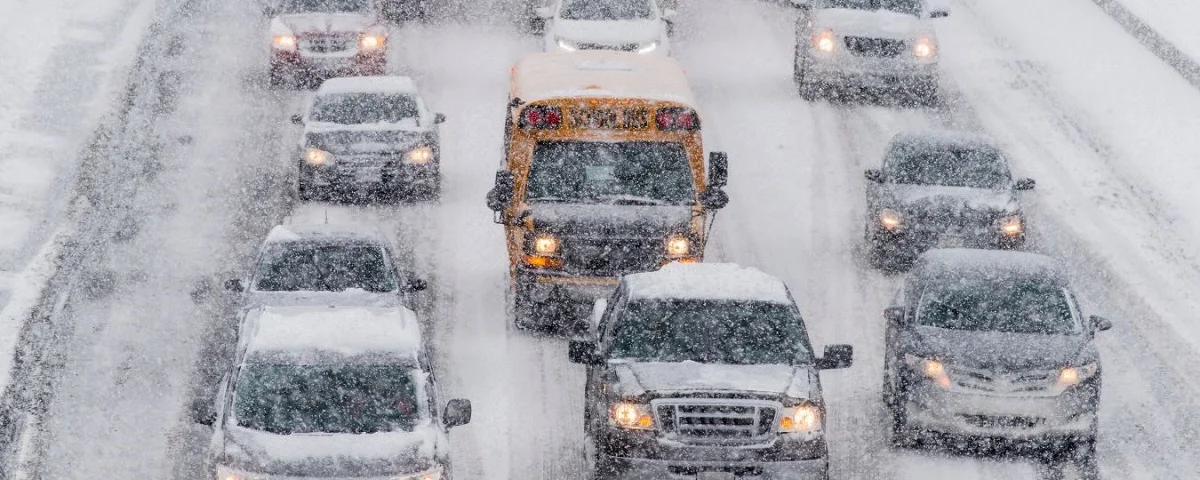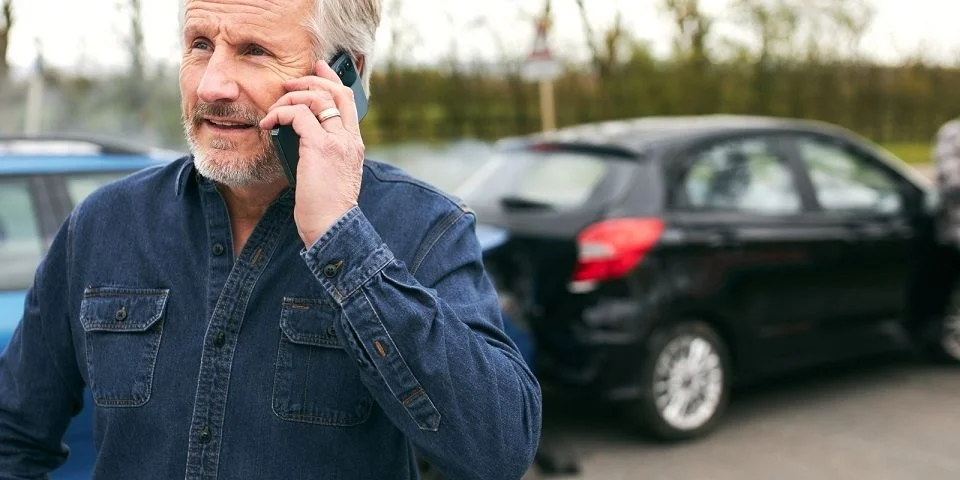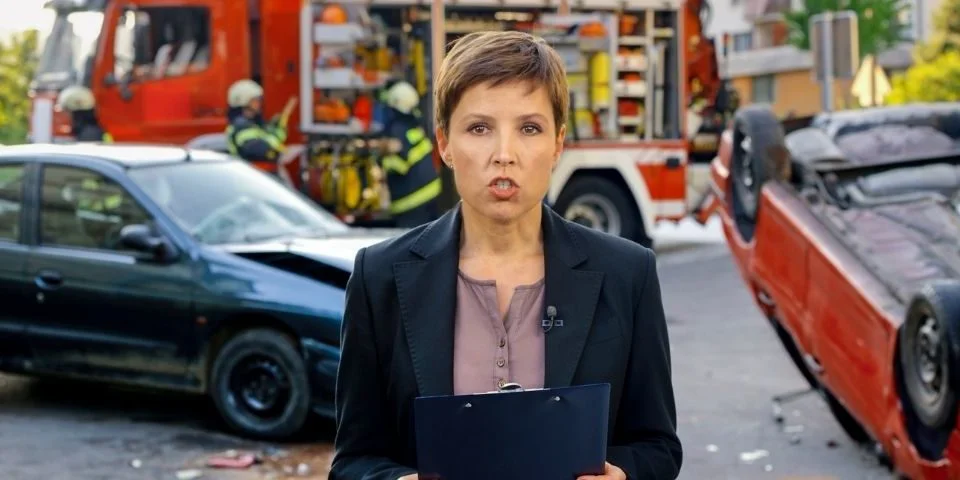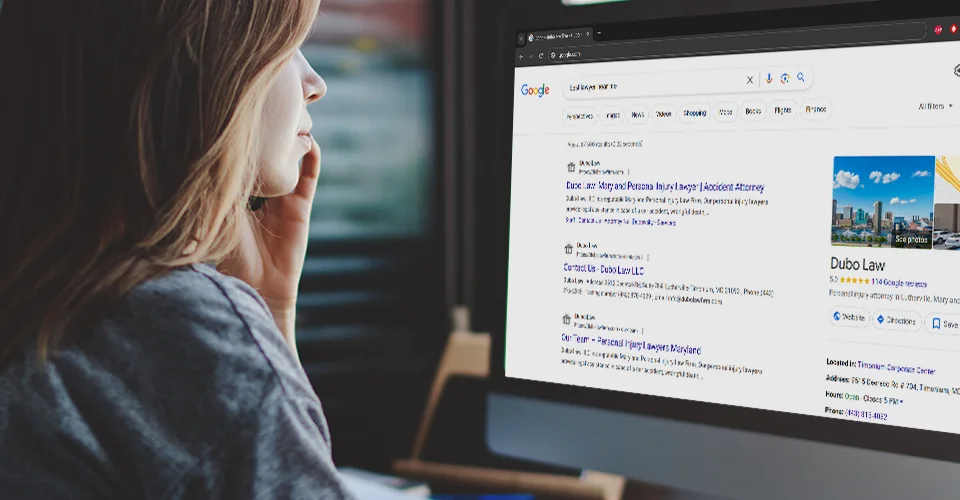
Maryland Car Accident Laws (Ultimate Guide)
December 20, 2022
Tips for Driving on Maryland Highways
February 24, 2023Winter season is coming which means drivers will come across snow, ice and other severe weather elements which are common for this time of the year in Maryland. Driving when harsh weather conditions start can be accompanied by hazardous roads which are dangerous even for best drivers among us.
Together with the winter holiday season comes too. Drivers are in a rush for holiday shopping and running errands before the year ends. This time of the year also increases the number of agitated and nervous drivers due to crowded roads and parking lots. All this combined with the snow and icy roads makes it a potential disaster.
Even though we enjoy winter season and holidays to come, some precautionary measures should be applied when driving. The American Automobile Association’s Foundation for Traffic Safety pointed that roads covered with snow, ice, water, or slush are responsible for approximately 500,000 crashes and above 1,500 deaths during the winter months. So, preparing yourself and your vehicle is crucial during winter weather.
Some of the common winter driving safety tips, which we will elaborate on in the following paragraphs, are to make a checklist of things needed in your vehicle in case you get stuck, fill gas tank, check the lights, make sure to have winter tires and check the roads conditions for your area. The best tip is of course to drive safely and slowly and to give yourself time to arrive at the destination.
This article will be of great help for winter-season driving preparation. Whether you are simply commuting to work or preparing for a longer trip, tips encountered here can advise you on uncomfortable situations and how to prevent them.
Car Gear Checklist
It is very important to own a kit in your vehicle during winter months in case finding yourself stuck or helpless. Winter events such as accidents and blocked roads can come unexpectedly, and you must be prepared and stock the vehicle just in case. Some of the items we should carry with us and keep on hand are:
- Warning devices such as flares, markers, and whistle in case of emergency
- First aid kit
- Cellphone charger
- Flashlight in case getting stuck at night
- Snow brush and ice scraper are a must if snowing outside
- Extra warm clothes, boots, gloves, hat, and blanket
- Jumper cables
- Snacks, water, and medicine if the trip is longer
- Tire chains as well as a replacement tire
Things to Consider Before Heading to Road During Winter Season
- Slow down – The first and foremost thing to consider while driving is to slow down, especially during harsh weather conditions. If the roads are slick and icy, it will be harder to control the vehicle.
- Keep distance – Another tip is to keep your distance since this will give you an advantage to stop on time in case of crash.
- Watch out for snowplow – A snowplow can be a great danger since it rides slowly, exits the roads often and overruns the lanes. Stay behind it at a proper distance since the snow can easily fly on your windshield and prevent you from seeing the roads clearly.
- Stay home – If the weather conditions are harsh delay the trip and stay home.
Prepare Your Vehicle for Winter Season
Vehicle preparation for winter season is crucial and can save you from many unpredictable situations. This is especially important if traveling long-distance. Your vehicle must be checked by an Approved Auto Repair (AAA) before starting the trip. Visiting the mechanic can decrease the chance of a vehicle breaking down in the middle of nowhere, which we want to avoid.
So be positive your vehicle is in optimal condition and complete the following to start the season off right:
Lights
The professionals will ensure your headlights, brake lights, emergency flashers and turn signals function properly.
Check the Leaks
Sometimes your vehicle can have some leaks, bad hoses and other parts which don’t function properly so check those too.
Check Fluid Levels
Fluid levels, belts, and hoses must be checked once a month or two, no matter the season. Transition from summer to winter includes many changes in your vehicle.
Check Tires (Mount Winter Tires)
Tire checking and changing is very important. During the winter the temperature drops increasingly together with tire inflation pressure. The driver’s side door frame has a label that includes the manufacturer’s recommendation for inflation pressure. When it comes to tire replacement, every winter season includes the transition from summer to winter tires. If you notice any damage or cracks on tires, take your vehicle to the mechanic immediately.
Check Battery
Another thing that goes along with the temperature drop is the battery power. It will take longer than usual to start your car during cold weather. Ask the mechanic to check if your battery has sufficient voltage, inspect the charging system and belts, and if needed, replace the battery.
Inspect the Cooling System
During the winter season the coolant is most likely to freeze and when this happens it expands. The expansion can damage your engine permanently. It is recommendable to fill and check your coolant regularly. The best mix is 50/50 coolant to water, but always check what your vehicle manufacturer suggests. The mechanic can refresh and flush your cooling system to make it work properly, remove rust and dirt which usually causes the clog and failure of the system.
Driver’s Tips for Cold Weather
Here are some driving tips during winter which mainly concern safety and common obstacles along with common sense. Many of these tips and advice may influence the next time you hit the road during the snow season. Make sure to read them all and apply them next time you sit behind the wheel alone or with the family and drive a short or long distance.
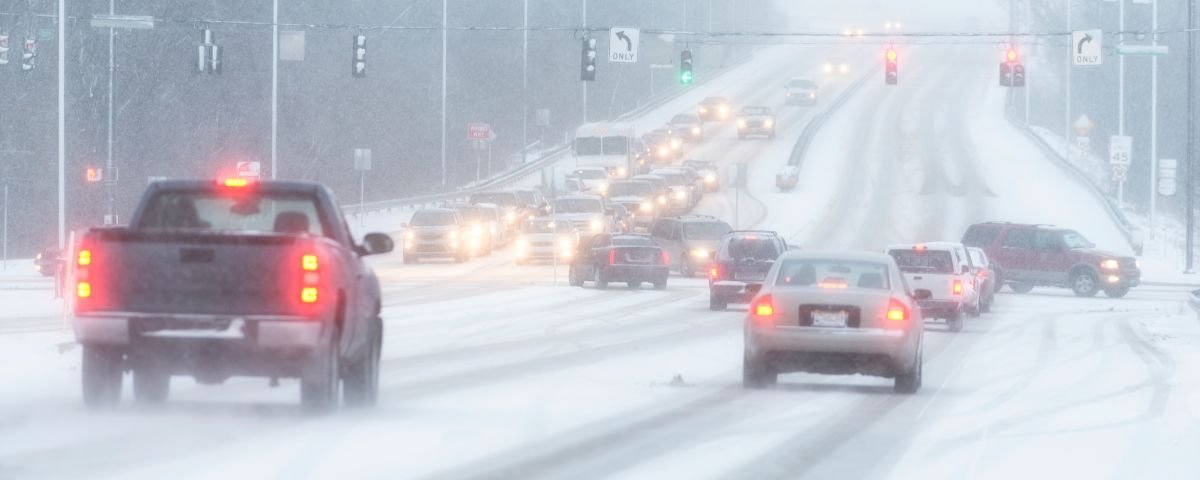
Child Seats
Every person who has a child must own a car seat that is installed properly. Child seat decreases the chance of injuries if a crash occurs. Seat installation is crucial, so check following pages to make sure you got acquainted with child’s passenger safety tips, which car seat to choose according to size and age. The NHTSA’s also offers the inspection of your current car seat.
During cold months parents tend to overdress their children while travelling. The tip is to put them some light jacket since heavy coats can intercede with proper fit of a child in the seat. If you are concerned about the cold, place a blanket around your child to secure warmth.
Make Sure to Fill Water Reservoir and Check Windshield Wipers
During summertime the wiper blades may dry out and become fragile. It is important to replace them before rain and snowstorm storms. Drivers who live in states with heavy snow and ice should install heavy-duty wipers and check if both front and rear defrosters function accordingly.
Your vehicle will use more windshield wiper fluids, so be ready for natural occurrences which come along with winter weather. You should fill your water reservoir fully before the first snow and make sure to use no-freeze fluids. An extra fluid should always be in your car in case you run out of current amount in the vehicle.
The Importance of Visibility
Winter months, snow, rain, and fog can make visibility and driving exceedingly risky. Before starting your vehicle remove all the ice and snow from the vehicle’s mirrors and windows. Use the cloth and defroster to free windows from a fog. Also, take off the snow from roof and hood because if it stays and you start the car, it can fall on the windshield, thus block the view of both yours and vehicle behind you.
Visibility is increasingly limited during this time of the year. We should be more careful and observe other vehicles. Especially if we drive at night we should slow down and check for the vehicle with flashlight. The visibility is so inadequate during winter that makes it almost impossible to spot other moving things on the road. Keep your eyes open!
Gas Tank Full and Fully Charged Battery
Traffic jams during holidays, snowstorms, ice storms and sleet can be challenging to your gasoline level or battery level. Waiting in those long lines can decrease both, since temperature outside is low and driver keep their engines running to preserve the heat.
If you notice the gasoline tank is half empty before hitting the road, fill it up fully. If you, however, drive an electric car, stay fully charged or at least at 80%. The systems of electric vehicles and below zero temperature can eat the battery, so be positive to keep the vehicle as warm as possible.
Take it Easy and Slow Down
Snow season driving main goal is slowing down, keeping the distance, and allowing yourself time to arrive to point B. Things we should get familiar with are that overpasses, and bridges freeze first and that we shouldn’t press the accelerator pedal when it is icy and snowy. Two things we should get familiar with:
- Traction Control System ascertains the loss of traction on car’s wheels. If the system identifies loss of wheel’s grip, it will apply the brakes immediately or level down the engine power. This can prevent your tires from spinning, but no matter what, don’t slam on brake pedal.
- Anti-Lock Braking System (ABS) – First thing to check is if your vehicle has an anti-lock braking system and learn how it works. Most modern vehicles have it. What anti-lock does is prevent the wheels from locking up while braking. If you have an anti-lock system, you should apply continuous pressure on the brake pedal. ABS system will slow the vehicle down more quickly than the driver, so it is a great safety feature.
Consider Changing Floor Mats
Because the weather is slushy, muddy, and wet during the winter season, you can also consider changing the floor mats. Maybe rubbery or thicker ones are a better option. Also, make sure to choose the correct size for our vehicle and install them properly. The improperly installed mats interfere with accelerator or brake pedal, which increases the crash risk.
Try Not to Use Cruise Control
Cruise control or adaptive cruise control is never a good option if driving during slush and ice season. Besides wet roads, there can be some black ice or unplowed snow before you. All these elements may result in losing control if driving on cruise control. Sometimes the system can’t react as quickly as you can.
Prevent Carbon Monoxide from Leaking
When the temperature is below zero and drivers are heading to work early in the morning, they tend to start their engines to heat the vehicle. What is important to pay attention to is carbon monoxide poisoning if doing this in the garage, even with open garage doors.
Plan Your Trip with Common Sense
Check roads, maps, and routes!
This is of great importance if you are getting ready to travel during the winter season. You should check local and destination weather conditions and traffic reports. If you notice any danger or harsh snowstorms try to delay the trip. If there is an emergency and you really need to travel, consider leaving early or checking all necessary vehicle features.
Make sure to get acquainted with directions, maps and use GPS. You may predict arrival time and avoid some roads. If going on long-distance travel, don’t rush, make time to rest, stretch, eat something, etc.
Make Sure to Know What to Do in Case of Emergency
- If your vehicle stopped or stalled on the side of the road during winter storm don’t run it for long periods because of carbon monoxide. If you must run it, check the exhaust pipe and clear it because blocked pipes can also cause a leak of gas.
- Stay beside or in the vehicle in case of emergency and try not to panic.
- Place markers on the antenna or vehicle’s windows and keep the inside light on so someone can spot you.
- Gather all the contacts of traffic and road help before traveling.
- Carry emergency supplies. (They are listed above)
- Don’t try to get yourself out of the snow! Call for help.
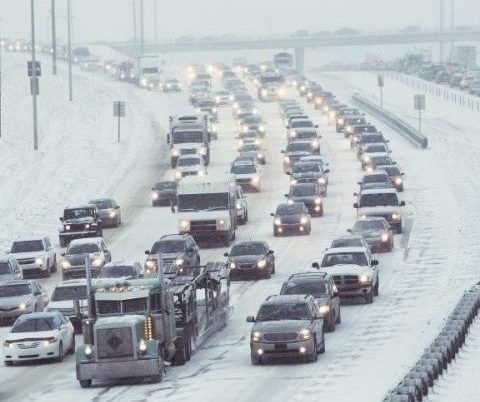
Allow Yourself Time to Arrive
What is usual for this time of the year is that it takes us longer to reach the destination. It is very important to be patient, allow yourself to be late and rest on the way. Being anxious about deadlines or road conditions can only increase bad judgment and cause an accident.
How to Avoid Car Accidents During Winter Season
Sometimes we really cannot avoid accident and it may be the other driver’s fault or simply weather conditions. The trick and tips we elaborated in this article can decrease the risk of a crash. Below are some tips recommended by AAA association:
- Don’t stop when going up and down the hill.
- Increase and decrease the speed slowly and wisely.
- Increase the distance from 8 to 10 seconds.
- Steer the wheel in slide direction. When your vehicle regains traction, overcorrection won’t be necessary.

Author: Neil Dubovsky, founder and principal at Dubo Law, LLC
Neil Dubovsky graduated with Honors and magna cum laude from the University of Baltimore School of Law in 2002. He received the prestigious Faculty Award, which was awarded to the student who best “exhibited unusual qualities of scholarship, leadership, and service.” Neil also received an AV Preeminent rating from Martindale Hubbell – the highest rating possible. He is rated as one of the Top 100 Civil Trial Lawyers in Maryland by the National Trial Lawyers Association and selected to the 2022 Maryland Super Lawyers list. Neil is a husband and father of two beautiful girls.
Contact Us for Your Free Case Review!
Address
9515 Deereco Rd, Suite 704
Lutherville-Timonium, MD 21093
Phone
443-275-6345
Texting number
(443) 870-4329
Hours of Operation
Monday – Friday: 8:30 AM – 5:00 PM
COVID-19 Update
Your health and safety are important to us. Please be advised that we are open for business during COVID-19 quarantines. All consultations will be conducted either via video chat, phone, or email.
Sign up for our newsletter



